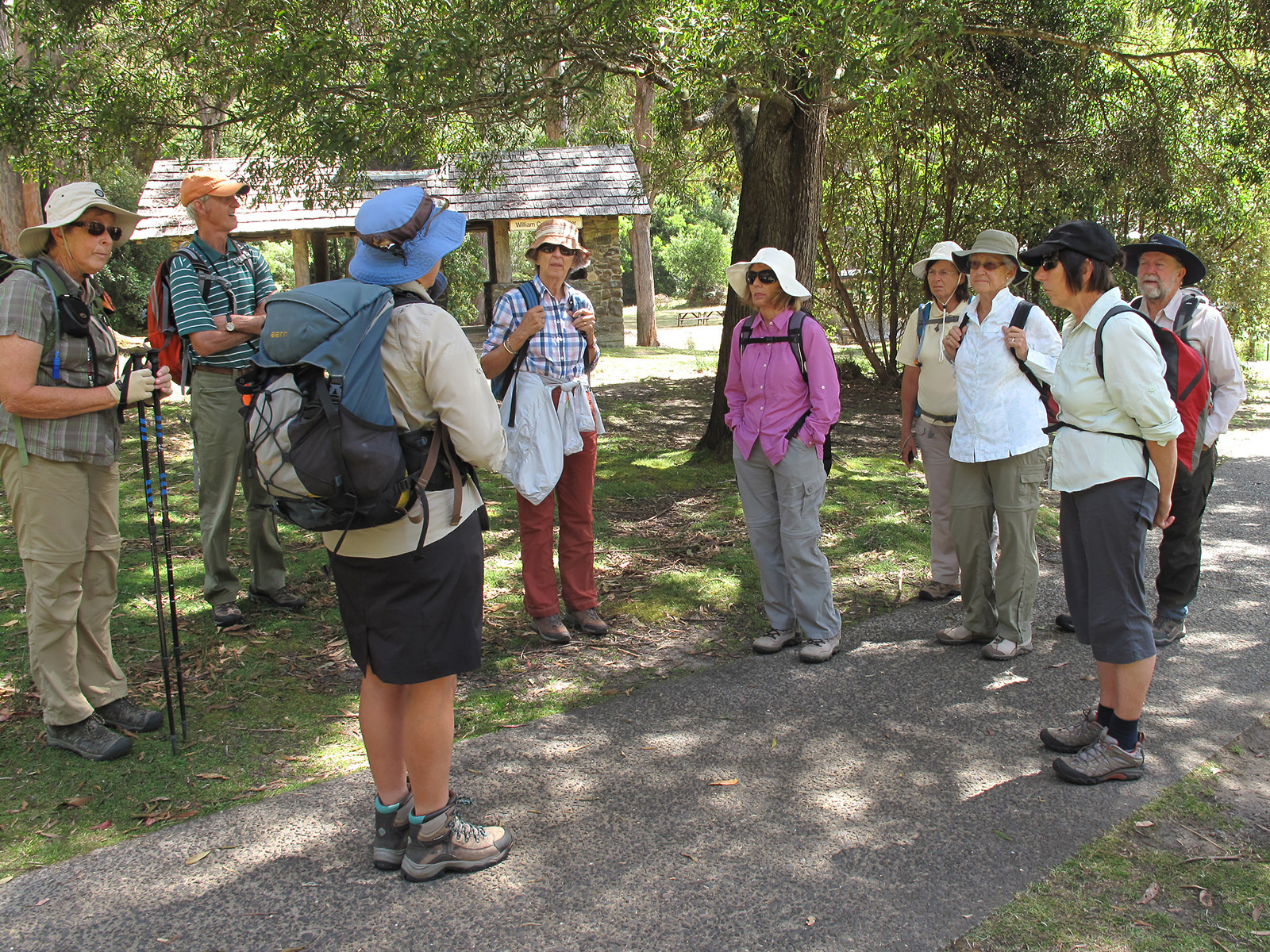Reading Time: 3 minutes
For a good start, it is important that all participants are at the intended meeting place on time, fully equipped and prepared.
Once everyone meets it is also important that everyone feels welcome, included and part of the group. Leaders should be at the meeting place early.
Vehicle convoys, car shuffles and parking
If a car shuffle is required, or the group must drive further to the start of the walk, be sure all group members have arrived before leaving the meeting place. See Planning car shuffles in Route planning.
For convoys:
- Explain the intended route of the convoy to the drivers in case of separation.
- Nominate an easily identified vehicle as the last
- At intersections and track junctions, each vehicle waits until the vehicle behind can see them before proceeding
- Share GPS coordinates and/or addresses of parking locations (e.g. walk start and finish) as a backup
When parking check:
- overhead branches or dangerous trees
- cars are parked on firm ground
- cars are parked facing downhill in snow or if snow is expected in gear with the handbrake off and wheels chocked
- no valuables are left visible inside the vehicle.
At the start of the trip
People should be welcomed as they arrive. This is particularly important for any newcomers or beginners. Collect club fees if appropriate, but it is preferable to have financial matters settled before leaving home.
Check that group members have food, water and all necessary equipment of a suitable standard. How well the leader knows the group members will determine how this is done. It may be sufficient to ask the group as a whole ‘Have you all got wet weather gear, food and two litres of water?’ It may also be necessary to speak to some group members individually to confirm they have everything specified.
Trip leader(s) may refuse to take someone on the trip if they do not have the necessary equipment of a suitable standard. The deficiency could place the group in jeopardy if unforeseen circumstances arise or the weather turns unfavourable. For example, it would be considered foolhardy to take someone out on a four day ski trip if they had no wet weather gear.
Gather group members together at the start of the trip and introduce people. A method of doing this is to have everyone stand in a circle and state their names. For a small group you may simply introduce people as they arrive. For club trips you may want to particularly welcome any new members and visitors, mention forthcoming club events and introduce other leaders and committee members..
Briefings
At the beginning of each day the trip leader should use a paper map to describe the day’s route and how it relates to the rest of the trip.
Include things such as:
- planned highlights and objectives
- likely lunch spot
- sources of water
- alternative routes or places where choices can be made
- expected finish time
- camp site
- sections that may cause concern, e.g. steep ascents or descents, river crossings, ledge walking.
- Who the first whip will be
- Who will lead the first section
Trip participants should have been encouraged to have their own copies of correct maps.
The trip leader should:
- Encourage other participants to follow the group’s progress on their map so they become accustomed to using it.
- Let the group know of other experienced members who can help improve navigation skills.
Group etiquette
Trips will run more smoothly if group etiquette for the trip is established. This may cover:
- Those ahead of the leader will wait at track junctions and all other places of any uncertainty until all are present
- Those in front of others should regularly look behind and wait if necessary to ensure those behind are not separated
- Rest stops, e.g. 5 minutes every hour, 1 hour for lunch
- Nobody should leave the track or the group without the leader’s knowledge
- If leaving the track for a toilet break, leave a pack on the track
- The leader must be notified promptly of any problems, e.g. fatigue, walking pace, hot-spots that could develop into blisters
- A ‘whip’ or ‘tail-end charlie’ – an experienced member whose role is to bring up the rear. Ensure that the same person is not left as the whip for the whole day unless they want to be.
A good start to the trip contributes to an enjoyable experience.

